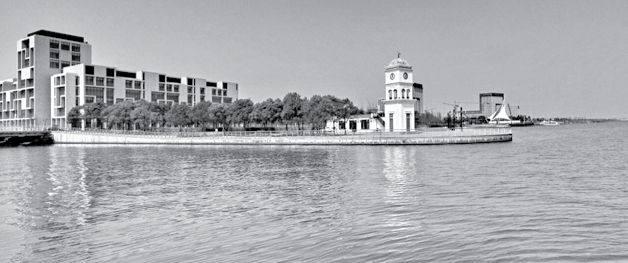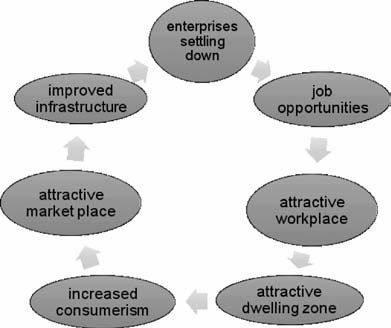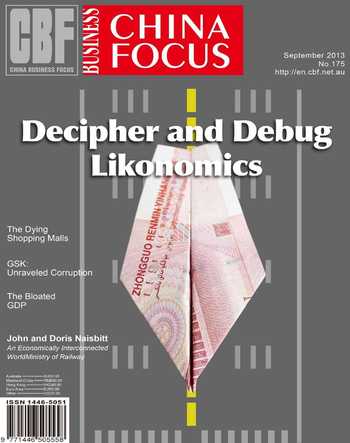Cities Need Circles,Not Only in Appearance
By Seraina Petersen
Sustainability may well be the catchword for the twenty-first century. Ever since realising that continuing in the careless fashion of the last decades will sooner or later lead to complete depletion of the planets resources, activists, scientists, politicians –indeed, everyone in a position of importance – have had to deal with the questions: What if the years of plenty for coal, oil, uranium & Co are soon to be over? What if humanity suddenly faces a massive resource gap, without alternative? In short, there can be no doubt that immediate and intensive action is required.
At the same time, over half of the worlds population is living in urban areas; this number is expected to increase to 75-80% by 2050. Similarly, over 50% of the Chinese population is living in cities and a rise of 20% is expected in as few as the next twenty years. Hence, the growing phenomenon of urbanisation is pressurising cities economically, environmentally and socially. While urban areas account for just about 2% of the Earths surface, they make up 70% of global energy consumption and carbon emissions. This phenomenon could either be combatted, trying to lure the population back to their rural origin, or, not unlike the soft technique in martial arts, the momentum could be taken advantage of to use cities as spearheads for sustainable development. This is why the term “sustainable city” is undeniably important when aiming for a secure future.
In China, both sides to city development can be found. Tongling in Anhui Province was almost exclusively living from its copper minerals for decades. Already during that time, the town was suffering from heavy pollution due to the omnipresent copper industry. Finally, in the 1990ties, those copper resources were exhausted and Tonglings economy broke down, leading to unemployment and increasing social inequality. Hence, Tongling is a distressing example for what happens when forgetting to add sustainability to the calculation. As an antonym, Lingang New City, 60 kilometres from Shanghai, raises hope that development could also be going into a better direction.
In 2002, the German architecture firm “von Gerkan, Marg and Partners” (GMP, in China since 1999) won the international competition for designing an entirely new city at the shore of the East China Sea. Lingang in its idea itself is designed for sustainability. GMPs masterplan included todays large green open spaces and of course the famous lake at the centre; roads built for preventing traffic jams; uncountable ways of saving energy and producing renewable energy inside the town itself; in short, an ambitious plan to make the city environmentally friendly(indeed, Lingang now is a project for a low-carbon city). And beyond that, it is clear that when creating a new city, sustainable development of society and economy are automatically focussed on.
This is where it gets interesting: how can, in a new-born city like Lingang, a circle of economy be created? Different sectors are expected to settle down in Lingang. For one, the already existing deepwater port Yangshan is an important factor to attract lowand middle-class workers who prefer staying close to their work. In the industrial section and production zone of the masterplan, heavy industry is expected to take off, with some enterprises already having settled down there, amongst which are foreign companies such as Siemens. While this exponentially growing industrial sector is attracting workers, it is also hoped that once the subway-high-speed line connecting Lingang with Shanghai will be completed, the 30 minutes drive will make it possible to live in one city and work in the other.
Meanwhile, stimulating economy in Lingang City itself(residential area including public institutions but without industrial and production zones) proves to be more difficult. So far, enterprises such as supermarkets or restaurants are mostly drawn in through subsidies by the state and through other financial incentives, as population is low and consumerism still tentative - here it is, the dilemma of creating a circle of consumerism and commerce from nothing. At the moment, 160,000 residents inhabit Lingang City, with only 100,000 of them being new to the area, and 40,000 of them are students or employees with the three universities which have relocated their campuses to this more spacious area. And while those students add an attractive young atmosphere to the city, the total number of inhabitants is still far from being reached, which tears a hole into the finances of any potential enterprise settling down, as local staff and infrastructure are lacking –for now: building in Lingang has started but eight years ago and its all-round completion will take much longer than until 2020 (as is still stated in official sources).
Lingang since recently is also presenting itself as an attractive market place for foreign companies, but whether these will manage to bring in workers along with them remains to be seen.
A similar issue arises with a possible tramway network: feasibility studies are currently under way to determine the most effective tram system; however, actually building the lines from an economic point of view will not make any sense before Lingang has more residents; reversely, the city will not be attractive unless a comfortable transportation system has been set up, as Lingang is stretching out over 300km2. This is also why a carsharing-approach will be tried out, although the contemplated 10 carsharing-stations with a total of 50 cars will never suffice for the ideal population of 450,000 people. Of course, the use of electric cars would greatly improve the citys CO2 balance; however, while those models are being subsidised by the state, it cannot be foreseen how many residents will in fact use them.
Talking of CO2: some of the enforced statutory requirements are showing effects, such as building solar panels on apartment blocks and on roofs of industrial buildings of a certain size. But an investors first priority will be to make financial profit, not necessarily spare the environment or make sure a good social mix is achieved. State subsidies will only get Lingang so far, and innovative entrepreneurs and investors are desperately needed. Hopefully, projects such as the service centre developing low-tech, easy-to-use tools for saving, or producing renewable energy; such as the heat exchange system to heat and cool down buildings with sea water; such as the biological water treatment in the wetlands, will work out; and it is to be hoped that the energy produced by the offshore-wind farm 10km off the Lingang coast can one day be counted into the CO2 balance of Lingang, not Shanghai.
This being said, a lot of commitment and courage is needed to make Lingang environmentally and socially sustainable; and only when these factors are guaranteed can we be sure that economic stability and sustainability is also secured. And yet, this hopeful example for city development shows in how many ways economy can flourish all while protecting the environment and keeping society healthy.
It also needs to be held that Lingang as a new-born city is an exception, and making already existing cities sustainable is much more difficult. Changes on uncountable different shades of technology, architecture and politics will need to be made and whole mind-sets re-built. However, the effort is still worth going through, because there is a good chance that while “sustainable” is the 21st centurys catchword, its slogan may be“preserve or die”.

